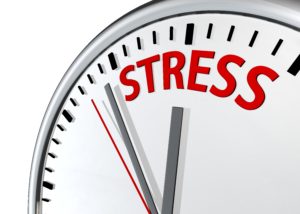
If I’m really honest with myself, I knew on the second day that this wasn’t going to work.
I knew as soon as I heard the words “There is no running on the playground” that something was fundamentally wrong with this school system. I knew when I asked what could be done about the no running rule and was told that this was public school, not private school, that something was wrong.
The kindergarten class didn’t have grass. I was told that there’s no running on asphalt. “It’s not safe and can cause really bad scrapes.” By definition, scrapes are not really bad. Scrapes, bumps, and bruises should be a part of childhood—they’re how kids learn to manage risk. Scrapes now prevent worse decisions later.
I was told that the school could not meet my child’s energy needs and that instead he needed to get his energy out at “running club” every morning. The thought of five-year-olds running laps to provide an energy release for what they should be getting through creative play at recess was stunning.
The “No running on asphalt” policy is the norm for the entire district in San Diego. If your playground is all asphalt, well, sorry, no running and if there does happen to be grass, running is only allowed in teacher led organized games. No free play running on the grass because the children could collide. In the face of an ADHD epidemic and an obesity epidemic how are more parents not enraged? Considering scientific proof that underdeveloped sensory and core strength systems cause children to fidget more by seeking missing stimulation – how are so many trained educators going along with this? What about the neuroscience that proves that kindergartners cannot sit still for long periods of time? How can we require such young children to stay still all day while adding increasingly heavy academic demands?
It is unfathomable and yet, it is happening. It is happening everywhere.
The second week of school, the teachers introduced the discipline policy. This policy, which during my school search had been described as “respectful” and “discreet,” was anything but. Children who behaved well each day were given green cards. After three warnings they got yellow cards, then orange cards accompanied by a phone call to the parent, then red cards signifying a visit to the principal’s office. And the cards were public: every day at pick up, children were lined up against the wall, card in hand for all to see.
were public: every day at pick up, children were lined up against the wall, card in hand for all to see.
I don’t like these discipline systems in any context, but they are even worse when the kids are also forbidden from moving around. How many more yellow, orange, and reds are given out as a result of the lack of energy release throughout the day? How does self-esteem suffer in the kids who are trying to behave but incapable of staying still that long? Kids are being punished for acting like kids. They’re caged up with energy to burn.
Worse still, in my son’s class, the kids had P.E. instead of recess one day per week. So on Thursday they had no free play, no break from direction, no time to regroup and let their minds go free. Four straight hours of directed learning—for five- year- olds.
On some Thursdays the teacher sent home reports about lunchtime behavior issues. And not just to my family—parents from the entire class received group emails about Thursday lunchtime behavior. In certain circumstances every single child was getting behavior cards at lunch, even the few who were managing to maintain their self control. The teacher wanted to prove a point and she broke trust with the “good” kids while doing it.
How had no one put this together? Of course they were behaving wildly! It was their first break all day.
I connected the dots. Then I volunteered. A lot.
I thought maybe things would be okay if I could get them to overturn, or at least adapt, the no running rule, but my optimism vanished when I began to see more global problems. The running was now the least of my worries—even if it was, perhaps, the underlying cause of many of the problems.
I heard things like, “there’s no drawing at the writing station, no scribble scrabbling, color inside the lines.” I heard children lectured for mi nor violations (like drawing instead of writing letters). I saw timers being used at learning stations. I saw children stressed when timers went off.
nor violations (like drawing instead of writing letters). I saw timers being used at learning stations. I saw children stressed when timers went off.
I saw teachers, counterproductively, withholding recess from children unable to complete their work. Who could think this was a good idea? It was explained to me that children had to learn time management. The kids could be goofing off or legitimately slow and needing help, but the punishment was the same.
I saw kids showing anxious behaviors.
I saw certain boys being labeled and regularly put in the corner as a way to control behavior.
I saw tattling believed and sometimes rewarded, and offenders punished without the chance to tell their side. I saw the braver ones try to explain, only to be silenced. The not-so outspoken ones sat in dismay, their voices becoming extinct.
I saw a boy fall—the coach, a substitute, said, “That’s why you don’t run.” The boy had actually been knocked down. When the boy asked for a Band-Aid, the coach told him that he was fine, to get in line, that he wasn’t in preschool anymore, he was in kindergarten, that he was a big kid now and didn’t need a Band-Aid. This was the second week of school.
I was beginning to see the pervasive lack of compassion, or even tolerance, for age-appropriate behavior. I saw it from teachers, I saw it from coaches, I saw it from playground staff, and I saw it in the rules that disregarded common sense.
When my son became afraid to write his name, I was concerned. When he stopped writing and drawing all together, I was devastated.
We stayed for six weeks – longer than we should have.
We stayed after my son asked me why kids were always supposed to use good manners, but the teachers never used them.

We stayed even though I couldn’t give him an answer. We stayed after he told me “those cards hurt people’s feelings.”
When he started panicking and running out of the room during simple instructions in activities outside of school, I knew we were on a path to anxiety and early hatred of school.
But we stayed. We stayed to see if it would change. We stayed to give it a chance. It was one of the “best” schools in the district. It had high test scores. Unfortunately, there is no test score for humanity.
Then, one day, one more incident, one more child treated as if he was not a person, and I reached my limit. I had arrived at school at the beginning of P.E. The coach told one boy that he had to sit out because he had told her at the beginning of class that he didn’t want to play. She said to him, “You’ll learn real quick how I am.” He sat out the entire P.E. class.
Another mom came to me and said, “That’s not what happened. He told her he did want to play, but she misheard him.” She went on, “Some of this is hard to watch, isn’t it?”
When the coach reported the behavior problems back to the teacher, the boy who had been made to sit out during P.E. was then made to sit out during class. I told the teacher that the boy had been misunders tood. She told me she wasn’t there and didn’t know if that the boy might have changed his story when he realized he couldn’t play.
tood. She told me she wasn’t there and didn’t know if that the boy might have changed his story when he realized he couldn’t play.
It doesn’t matter whether he changed his story or not. Even if he had originally said he didn’t want to play, he wasn’t asked why he didn’t want to play. Children should be given a chance to explain. Maybe something was bothering him. Maybe he had a blister, who knows. When kids aren’t given a chance to explain, they simply learn to shut down. I saw this repeatedly, that day with the boy in P.E., and from the beginning of the year.
I left school that day and wept. I wept for sending my son there. I grieved for what was supposed to have been—a good community school where my children would grow up alongside lifelong friends. I was done giving it a chance. I was done waiting to see if it would get better. After my son got home that day, he never went back.
I teamed up with a good friend whose son was in the same class. We did some research and notified the school that our boys were leaving. One week later, we started our sons at a new school.
A charter school* where children are cherished, their ideas welcomed, their individuality honored, and their energy celebrated. A school that was able to turn my son around in just three weeks.
The problem wasn’t me. It wasn’t that I was having trouble “letting go” of my first baby, as some at the school had suggested to me. It wasn’t my son. It wasn’t that his energy and behavior were unmanageable. It was the school. It was the school’s profound lack of respect for children. It was their institutionalized ignorance of basic child development.
I hope that the tide begins to turn in our public schools. I hope that educators and parents take a stand. But for now I am thankful that my son is thriving, delighting again in writing his name.
You can read more about our journey with school and how we originally chose public school in the following two posts:
Public School: How I Made the Choice
School and the Unconventional Parent
There is a vast amount of research supporting the importance of movement for learning. The lack of recess and active play is becoming common in schools. I am sharing several links for anyone else it may help in overturning school policy. Special thanks to San Diego Cooperative Charter School2 for working so quickly and compassionately with us.
Follow up Post:
Choosing a School: The Not So Obvious Questions You Need to Ask
Other helpful links:
Book: A Moving Child is a Learning Child; How the Body Teaches the Brain to Think (Birth to Age 7)
The Crucial Role of Recess in School – American Academy of Pediatrics:
More Active Play Equals Better Thinking Skill for Kids – NPR
Exercise Helps Children with ADHD in Study – The Wall Street Journal:
Exercise is ADHD Medication – The Atlantic
Why So Many Kids Can’t Sit Still in School Today – Washington Post:
The Right, and Surprisingly Wrong, Way to Get Kids to Sit Still in Class- Washington Post
Playing Tag Keeps Children More Focused in Class – Education Week
Tag Banned in Schools Across America
Too Much, Too Soon Campaign (UK)
Article Links About Play – Child’s Play Magazine
The Right Number of Bloody Owies – Teacher Tom
What Happened to Kindergarten – Scholastic.com
Not Allowing Kids to Run on the Playground! – Irish Examiner
My Stoplight Moment (on behavior systems)
Everything You Need to Know about Common Core – Washington Post
I’ve had a lot of feedback wanting to know what can be done and I’ll write about that soon. Here is one good place to start:
The Schools Our Children Deserve – Alfie Kohn
Help This Mom Fight New School Rule: NO RUNNING AT RECESS – There are a lot of good ideas in the comments here.
* I am mindful of the issues surrounding charter schools nationwide. I am in no way advocating for privatization of public education. In California there are a few teacher-led, grass roots charters that are teaching in developmentally appropriate ways. We were lucky to find one of those. I am working on continuing to advocate for public school students because when involved parents leave…changes don’t get made.

Standing up and applauding you, Kelly! Not only for this article, but for making the choice to find a school that better fits your son. I work as a teacher in a public school and have seen many of the same concerns around basic respect for youngsters that you have witnessed as a parent and school volunteer. The problem is pervasive, and often feels insurmountable.
So, how can we start to turn the tide? As a teacher, I would like to see more credits required in child development classes within teacher training programs, and particularly in our continuing professional development. But most important, I think, is the voice of parents who stand up and say “We want better! Our kids deserve better!”
Thanks for being a voice for the kids!
Exercise is key to mental health. The pediatric literature on this topic is virtually irrefutable. The challenge to mandating exercise into public school curriculum is multi-factorial and complex, and for those of us with kids starting school now…. Not achievable in our time frame. However, while policy makers and school administrators work out the details, there is nothing stopping knowledgable and concerned parents from collectively bringing fitness into their kids routine and reaping the benefit. I personally run my 5 year old each day before school for 15-20 mins. The teacher noticied immediate improvement and asked, “what are you doing differently?”
Thank you for putting my very experience into the blogosphere. We are also in San Diego, and when I first heard no superheroes, no monsters, no tag, etc for so-called playtime, I knew our energetic boy was going to be a tough fit for the school. Then 12 out of 15 kids at his lunch table are obviously overweight. Tragic indeed!
There is a broader context than a need for more child development classes and professional development, and in contrast with the rest of the world, these issues are minor as all hell (Have a look at Chinese schools.) We have a problem as parents seeing things in a one dimensional light, and we have a tendency to decontextualize management approaches from the larger picture. This causes us to blame teachers for every problem (because MY child never makes mistakes!), when it’s society itself that is reflected through the school system. Everyone would freak out if we decided to apply Howard Gardner’s theories in schools, and even Montessori’s on a large scale. Teachers are already well versed in this kind of professional development, and they’re more familiar with developmental psychology than you probably think. They know there are problems on a systemic level, but it’s not them that needs to change. It’s society itself.
Maybe the politicians and administrators should have to take child development classes too.
Hi, Annica. I don’t think Kelly is blaming on the teachers. I wouldn’t. The problem is the whole system, the ratio teacher-student (too many student to manage), the education policies that aren’t necessarily made by the teachers, the unrealistic expectations they put on children. It is a fact, lots of things have to change in public education, but we can’t wait until this happens. Childhood is too short to expose it to such damage.
Hi, Annica. I don’t think Kelly is blaming on the teachers. I wouldn’t. The problem is the whole system, the ratio teacher-student (too many student to manage), the education policies that aren’t necessarily made by the teachers, the unrealistic expectations they put on children. It is a fact, lots of things have to change in public education, but we can’t wait until this happens. Childhood is too short to expose it to such damage.
Is there any chance you would be willing to email me the name of the school you left and the school you ended up? My boy is starting kinder next year and I have many of the same concerns. I have toured one charter so far and i know they use the card system and only get 40 minutes of free play per day. 🙁 would love a little help to make sure I’m not missing ouT on a potentially good school or wasting my time on one with a terribl fit 🙂 thx!!!
We left Miramar Ranch in Scripps Ranch and went to The San Diego Cooperative Charter School in Mountain View there is one in Linda Vista as well. The website is being rebuilt so if it’s not up try in a couple days. http://thecoopschools.org/domain/28
It breaks my heart to hear of such travesties occurring with education. Our kids are worth the effort to get to the bottom of the problem and it sounds like you did just that. I happen to be meeting with SDCC tomorrow so it was serendipitous that I came across your post.
Hi, Kelly,
Just want to tell you that every word and experience you described in this publication resonated deeply in my chest. I saw the exact same things in my son’s kindergarten. I talked to some parents about it and they didn’t react at all! I felt so odd among them. I did too wait a little bit longer than I should have to pull my son out of that school. Now we are happily homeschooling, unschooling and outschooling. I thank you for putting thing with such clarity and for other parents to see it and wake up. I’ll share your article in my Facebook wall hoping it will help som arent who is having some hesitations about their children school. Thank you. Carlos.
My son had a very similar experience in kindergarten. We pulled him out to homeschool about two months into first grade. I always assumed they just didn’t know how to help him behave, but then when we started homeschooling, I started researching it, because I started considering being an educator one of my “jobs.”
I discovered they have not only studied the subject extensively and scientifically, but came to the same conclusions you outline in your article, and these things are generally taught sometime in the course of obtaining a teaching degree. It is relatively simple to implement, yet somehow too often gets lost in the day to day administration of a school. That somehow makes it even worse.
I think these teachers don’t recognize the slippery slope that has happened to children’s unstructured time. They remember when they were 4th graders, losing one of their 3 recesses (including after lunchtime) was an effective punishment. Now, 30 years later, they think a kindergartner losing their one recess per day is equally appropriate. And they “prove” it by showing how much their students are bouncing off the walls without their harsh methods.
“Despite all my rage I am still just a rat in a cage”. That is the image conjured up when you mentioned a running club. Kudos to you for being brave enough to be the change.
When my daughter was in Kindergarten, I got a voice-mail from the PE teacher saying she wanted a conference because my 5 year old wouldn’t sit still during PE. It was so ridiculous I never responded back. At at this school the kindergarteners only had a 15 minute lunch, a 10 minute snack, and no nap time at all. It was learn learn learn from 8am until 3pm with no time to rest their minds or have physical activities. My son is in Kindergarten this year and the school he is at is so much better.
I agree wholeheartedly! But what about from the schools side?? A lot of these changes have been made because teachers are so busy trying to please EVERYONE that they have no idea how to teach anymore. I have witnessed a mother telling a teacher her son is strong willed and to “just go with it”! Another saying she needs the teacher to use oils on her son to help with behavior problems…REALLY?? she has 20 other students! Public school is not what it used to be but it’s not because the teachers don’t want to teach! My kids have decided to home school and I am beginning to see this as the way to go.
I loved this article. In many instances, there are few other options for education other than the public school and homeschooling. As a pediatrician I wholeheartedly agree that we are destroying intellectual potential with the current neglect of normal childhood development. I, too, grieve the loss and waste that this system cost us personally. Schools have become, by and large, a toxic place that kids must endure or escape from.
Muy bien dicho, me partió el,corazón tu forma de exponer los hechos, así es, tienes razón y es muy doloroso de leer, quizá porque la mayoría ha pasado por eso, o porque sus hijos lo hicieron o,simplemente porque miles de niños aún sufren las consecuencias del adormecimiento en que se ha visto sumida la educación desde hace décadas, es una verdadra tortura. Y es estupendo que algunos tengamos opciones, de transladar a nuestros hijos de escuela, o pagar una privada, pero muchos, muchos pades no poseen este enorme privilegio. Sin dinero o fuentes de información es muy complicado que se logre.
A veces los profesoes se sientesn atacados, se nota, pero ellos son víctimas también, así como muchos padres lo son, pero es un deber, por lo menos (sin ser condescendiente) de aprender cosas nuevas como adultos, aprender a prepararse en temas de paternidad y educación, y quien lo difunde, como tu, tiene toda mi admiración y respeto.
Great, tragic, and all-too believable post!
You and your readers might enjoy video of a talk I gave regarding similar issues last year.
https://vimeo.com/121477124
As an earky childhood teacher I am all too aware of these awful, old fashioned views of childhood. Whst a fantastic article.
Thank you. We stayed 5 1/2 years too long and now I’m repairing the anxiety and schoil negativity for my 11yo. We home schooled for 1 1/2 terms and are now transitioning to a democratic school. I feel horrible criticising public education (australian) that I bought into for so long because “that’s just how it is” because I respect the rights of others and their choices and I truly believe most teachers are kind and committed people who are stuck in a terribly broken system but I’m also angry there are so few respectful and developmentally appropriate education options available. Someone needs to be the voice for change.
It is incredibly frustrating for me as an educator and parent to read about these insane policies. If my children had been in a school with those policies, I would have pulled them too.
But it also troubles me that the same politicians pushing charters are the ones creating the insane testing regime in the public school system that is pushing districts to take away recess from kindergartners to prepare for standardized tests.
We need to fix the public school system, not abandon it.
let me pose this question though. what about the working poor, the working class and the lower income folks who do not have options to homeschool, private school or charter school their children? what about us? every time someone with money bails on the system instead of trying to fight tooth and nail to make it better for EVERYONE, we all lose. all children deserve to be respected, deserve diverse avenues of education that meet their needs. instead of bailing on the system, i’d like to see people stand up and fight to make things better. the problem in our gov’t underfunding schools and trying to get those in the middle income brackets and above to go to private schools. point fingers where they deserve. hold the right people accountable.
Misguided school officials are trying to turn kids into robots. It’s all the more tragic because all that early direction and instruction may actually harm their later school achievement, as L. Darling-Hammond and J. Snyder pointed out in 1992, citing a large-scale study of kindergartens in Germany. The psychologist Peter Gray has written extensively about the foundations for real learning having always been children’s natural instincts to play, to explore, and to socialize with others in mixed-age groups.
I am looking for a school for my sensitive and strong willed son. I have been reading and researching like crazy. I don’t think I’m a good match for a homeschooling mom… and yet I don’t know what school is right for my boy. And, in general, the lack of play and movement is a hug concern.
As a health coach and a mom I want my kids to be moving and not sitting. Sitting is terrible for you at any age, and to imagine it is expected so much at such a young age is disturbing.
I’d love to know which school you left and which one you went to. I realize you don’t want to post publicly, but if you could share this some other way I’d be grateful.
Are you in San Diego? I’m so sorry I’m not sure I replied but if you email me at Kelly@respectfulparent.com I will help you out.
That’s is precisely why we unschool.
The discipline issue was just a non-negotiable when interviewing schools.
Unschoolingtouniversity.com